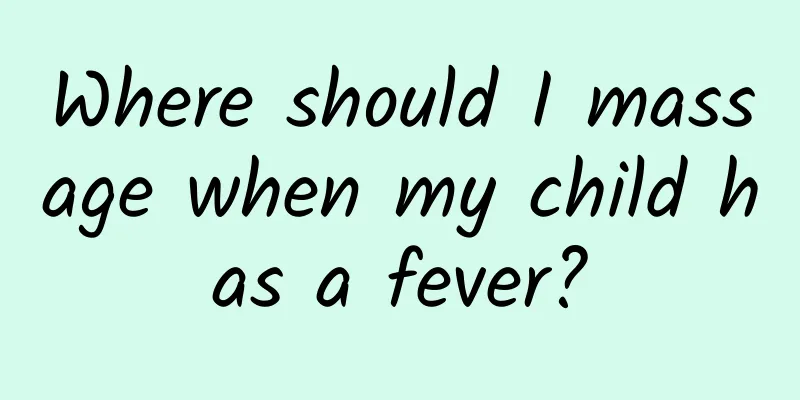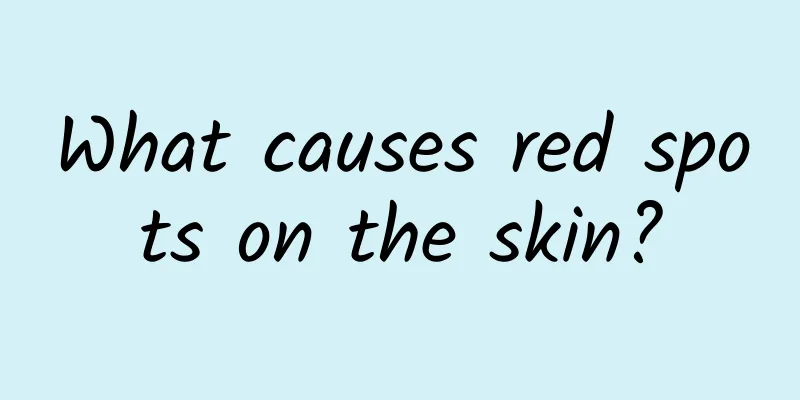Papular urticaria

|
Papular urticaria is a very common skin disease among infants and young children. Red papules will appear on the patient's skin, which are uniform in size and extremely itchy. The child will cry constantly, which will make the parents very distressed. The disease is also difficult to cure. What is even more painful is that it is easy to recur. After children are over 7 years old, the incidence of this disease will gradually decrease. The appearance of papular urticaria in infants and young children will have a great impact on children. Children will only express their discomfort by crying. Parents should give scientific treatment to their children with such skin diseases in a timely manner and pay more attention to their children's daily diet. Clinical manifestations The main manifestation of this disease is the appearance of skin rash, which is spindle-shaped, edematous red papules. They start out as small granular papules and then develop into soybean to peanut size. Sometimes there are blisters in the center of the papules, and blood blisters can occasionally be seen. There is an obvious red halo around them. The rash often appears in batches, often on the back, limbs, and is clustered or scattered. The rash is extremely itchy and easily erodes after scratching, leading to secondary infection. The rash of a single lesion disappears in about 7-10 days, leaving light brown pigmentation. New lesions often occur continuously, so rashes of different stages can be seen on the skin of the same person. According to Chinese medicine diagnosis, the rash appears in batches, the papules are red, hard like grains, there is obvious itching, the patient cries and is restless, the tip or edges of the tongue are red, or there is aversion to wind and fever, nasal congestion and runny nose, red and sore throat, and cough. This is a syndrome of wind-heat stagnation. If the rash is relatively large, with blisters on it, obvious itching and pain, yellow face and irritability, or mental fatigue, irregular bowel movements, yellow and red urine, loss of appetite, red tongue with yellow greasy coating, it is a syndrome of damp-heat stagnation. The disease has lasted for a long time, with recurrent rashes that are red and itchy, thirst and bad breath, occasional abdominal pain, dry and hard stools, teeth grinding at night, loss of appetite, and a red tongue with thick and greasy yellow coating. These are symptoms of stagnation and accumulation of heat. The diagnosis can be made mainly based on the clinical manifestations. Papular urticaria needs to be differentiated from varicella, the latter of which often occurs on the trunk, proximal limbs, head and face, and the oral mucosa is often involved. The lesions do not show wheal-like rashes, and no tension blisters occur. The patient may not feel itchy or feel mild itching, but often has systemic symptoms such as low-grade fever. To differentiate papular urticaria from urticaria, the former is not a simple wheal, but a mixed lesion, namely wheal papules or wheal blisters. Precautions 1. Pay attention to your diet Avoid triggers. The onset of urticaria has a certain relationship with diet, and certain foods may be triggers. For example, fish, shrimp and seafood, canned food, pickled food, beverages containing artificial colors, preservatives, yeast and other artificial additives can induce urticaria. In addition, irritating foods such as overly sour and spicy foods will also reduce the digestive function of the gastrointestinal tract, causing food residues to stay in the intestines for too long, thereby producing peptones and polypeptides, increasing the chance of human allergies. 2. Pay attention to hygiene Avoid adverse stimuli. People with a history of urticaria should pay attention to keeping indoor and outdoor areas clean and hygienic, and keep fewer pets such as cats and dogs at home. Avoid inhaling pollen, dust, etc. You should avoid wind, cold, heat, dampness, dryness, fire, insects and poisons at times. Adapt life patterns to changes in the external environment. Drinking, heat, emotional excitement, exertion, etc. will aggravate the dilation of blood vessels in the skin, triggering or aggravating urticaria. Rubber gloves, hair dyes, perfumed soaps and detergents, chemical fiber and wool clothing, etc. may become adverse irritations for people with allergies or urticaria and should be avoided. People suffering from cold urticaria should not go to the beach or take cold baths, and should keep warm in winter. Patients with cholestatic urticaria should keep their body cool and avoid sweating. According to relevant research, the positive rate of IgE in the blood and skin tests of smokers is significantly higher than that of non-smokers, and the allergic reactions caused by passive smoking such as their children are also relatively increased. Therefore, people with urticaria should stop smoking. 3. Pay attention to allergies caused by drugs In clinical practice, some drugs can cause urticaria, such as antibiotics such as penicillin, tetracycline, chloramphenicol, streptomycin, sulfonamides, polymyxin, antipyretic analgesics such as phenacetin and aspirin, etc. Some Chinese patent medicines such as Ganmaoqing and Niuhuang Jiedu Tablets can also cause allergies and trigger the occurrence of urticaria. When you are taking multiple medications and suspect that urticaria is caused by one of the drugs, the simplest and most effective way is to stop taking the medication immediately. Papular urticaria is prone to occur in infants and young children, which should arouse parents' vigilance. If a child develops such a disease, he or she should go to a professional hospital for treatment and pay attention to diet. In many cases, this disease is related to diet, especially seafood and foods with additives. More attention should be paid to the patient's hygiene to avoid some environments that may irritate the patient. |
Recommend
Causes of peroneus longus pain
The causes of peroneus longus pain are trauma, in...
What is the cause of the small white pimples in the eyes?
Pimples are not unfamiliar to many people. Pimple...
Job's tears, kudzu root and poria
In traditional Chinese medicine, it is common to ...
What causes morning sweating?
If you sweat profusely in the morning, you should...
TCM diagnosis and treatment technology
The most critical characteristics of traditional ...
How to treat obesity caused by liver and gallbladder deficiency
Losing weight has always been a hot topic among w...
Does the kelp in kelp vinegar need to be cooked?
Kelp is a common seafood. It has a relatively cri...
Symptoms of damp heat
Damp-heat is a term in traditional Chinese medici...
Why do my calves swell up after a day?
After a day's work, when you go to bed, you m...
What medicine is better for children with allergies?
Because children have relatively low body resista...
What is the best treatment for cervical spondylosis?
Cervical spondylosis is not a strange disease for...
What to do if the big tooth is pulled
After the molars are extracted, you should replac...
Does eating kelp have any effect on gout?
Gout patients must pay attention to scientific tr...
What are the treatments for pelvic hydrops?
Gynecological diseases are emerging in an endless...
Chest tightness
When we exercise too much, we will feel chest tig...









